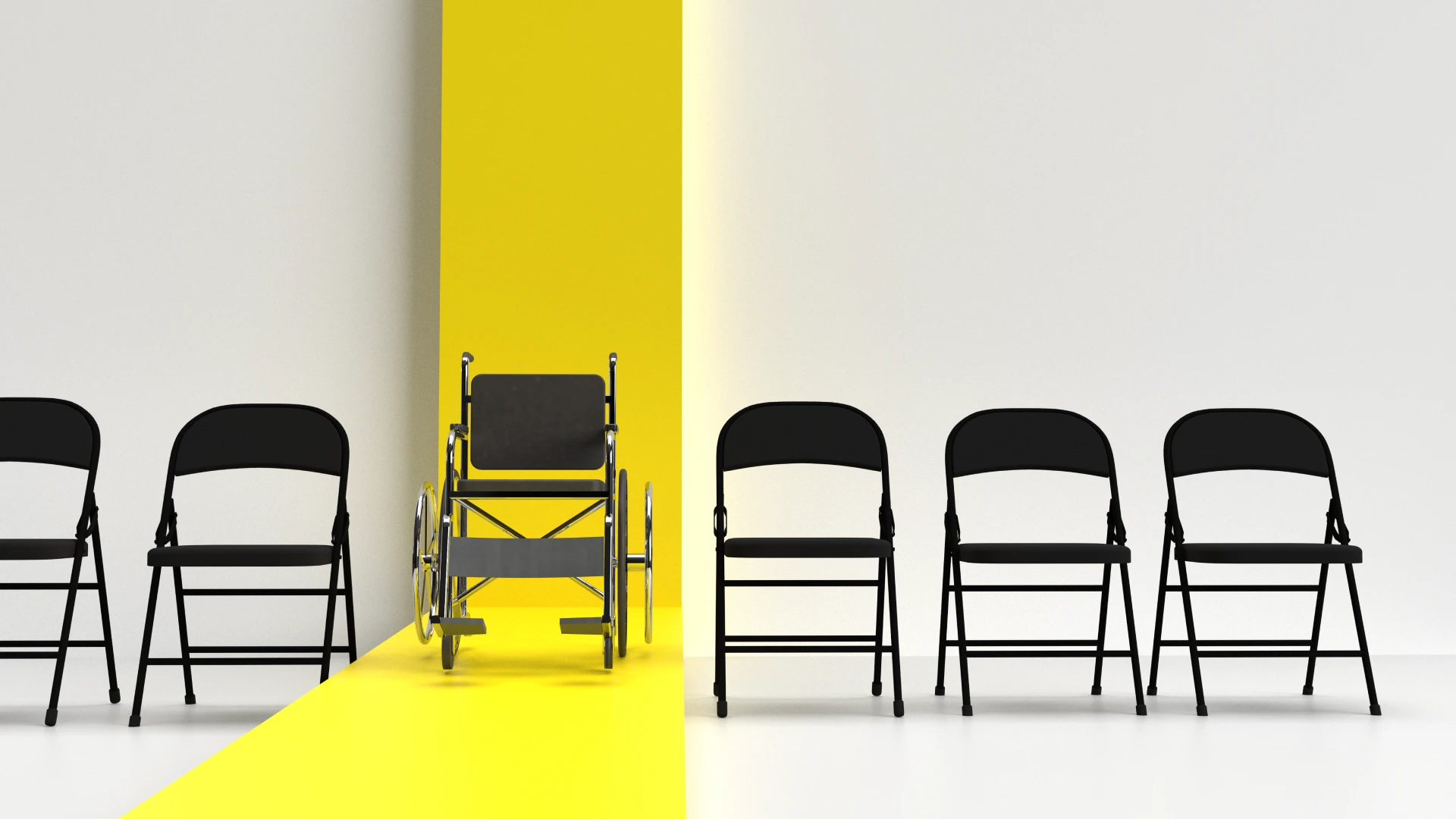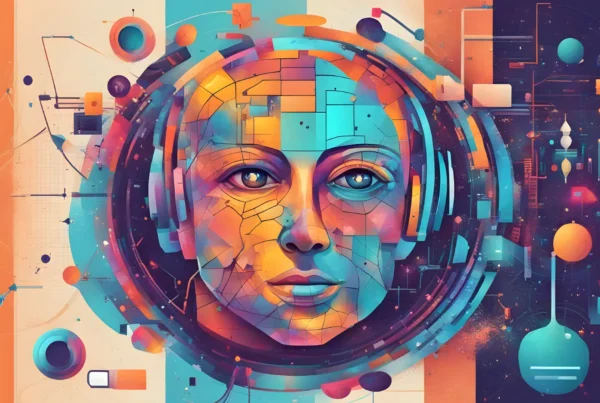Tools directly impact user experience and should be considered by designers and developers.
Assistive technologies are tools closely related to accessibility. In various ways, they enable the creation and enhancement of abilities so that people with limitations can integrate into new spaces.
Although they are part of the technological spectrum, they are not limited to the digital world, as they can be used in different environments and tasks. They work to facilitate and make activities that are often seen as routine more comfortable.
Moreover, they have a direct relationship with the development of new products, including digital ones. This is because these technologies completely change the user experience.
What is assistive technology?
Assistive technology, or AT, is the term used for any device, software, or equipment designed to assist individuals with disabilities of different types and degrees in performing tasks that would otherwise be challenging or impossible to accomplish.
In this way, assistive technologies aim to eliminate barriers to promote inclusion. In other words, they focus on accessibility by empowering individuals with various types of limitations, such as physical, sensory, cognitive, or communication impairments.
Therefore, they are essential in a world that values inclusion. These technologies overcome barriers that could be imposed by different types of disabilities. For example, the use of a social network by a person with visual impairments.
Assistive technology does not exist solely to include people with disabilities in the digital world, even though it makes use of a range of technological devices. They are diverse and present in different aspects of life and daily activities.
Want an example? Think of items that aim to improve mobility and comfort within homes. For instance, lights with automatic activation and voice-controlled appliances.
On the other hand, examples of digital assistive technologies include those capable of interpreting an image and describing it, screen readers, augmented reality glasses, real-time captions, among others.
The diversity of these tools and the benefits they offer to users make them increasingly present in the modern world. They have become indispensable precisely because they enable the inclusion of individuals, regardless of the type of disabilities or limitations they may have.
Assistive technology categories
There are different types and categories of assistive technologies. This diversity stems from the variety of functionalities and objectives that each of them possesses. Thus, it is possible to find facilitators for various types of limitations and disabilities.
Here are some of the main categories of assistive technologies:
- Aids for mobility and posture: encompass technologies that assist individuals with physical disabilities in moving autonomously in different environments. These include motorized wheelchairs, mobility scooters, exoskeletons, walkers, orthostatic stabilizers, etc.
- Alternative communication: refers to software and devices that enable non-verbal individuals or those with communication difficulties to express their thoughts and needs. This includes communication boards, voice devices, reading software, and text translation to Brazilian Sign Language (Libras).
- Environmental control systems: relate to technologies that assist individuals with reduced or nonexistent mobility in using environments fully and independently. Here, they address seemingly simple daily tasks, such as turning lights and devices on and off, activating cooling and security systems. Some examples in this category are virtual assistants and smart home devices.
- Automotive adaptations: are a category focused on technologies that assist in adapting to people with physical disabilities. Examples of this type include orthoses and prostheses.
- Computational resources: correspond to technologies aimed at the inclusion of people with disabilities in the digital world. With them, it is possible to access publications through audio or translations, give voice commands for typing, and enlarge images and texts.
- Technology for the visually impaired includes: specific resources for people who are blind or have reduced vision. With them, individuals can access different visual resources, such as texts and illustrations. This category includes screen readers, magnifiers, and recognition systems.
- Devices for the deaf and hard of hearing: are resources that make sound-related features accessible to those who do not hear or hear little, especially in digital environments. These include sign language interpreters, hearing aids, and visual alert systems that facilitate communication and perception of sound events
User Focus: Why Designers and Developers Should Pay Attention
The development of any product today must take into consideration the user experience, also known as UX (User Experience). UX studies the interaction of the audience with what is offered to them and ways to make it pleasant and meaningful.
This is also true concerning technological resources, whether they are applications or software. A product, digital or not, only stands a chance of being successful if it provides the consumer with a positive experience.
In this sense, it’s essential to note that the experience of a user with visual impairment, using digital reading features, is likely not the same as those without disabilities. In other words, the use of assistive technology by users should be taken into account by designers and developers, especially because it completely changes the experience they can have with any platform.
For example, what might be an eye-catching menu and well-organized website for those without the need for assistive features can become obstacles for those using assistive technology.
Therefore, the development of new digital products, to stay user-focused, should consider the diversity of users who will access them. This requires attention to both people without disabilities and those with some form of limitation.
Furthermore, designers and developers need to understand the real needs of people with disabilities, involving them in the design process and continuously testing products to ensure they are effective and accessible. By adopting a user-centered approach, we can create more effective and inclusive solutions.
Most common types of assistive technology in IT
The term ‘assistive technology’ is not limited to the digital world and encompasses a variety of different resource categories. Some are digital and are common within the IT field. They enable users to access various devices and tools, such as software and applications. Therefore, they are crucial for truly facilitating the digital inclusion of people with disabilities, regardless of the type.
Moreover, it is these resources that should be tested and considered during the development of new software. They will reveal whether the combination of assistive technologies and the new product indeed works well and promotes a good user experience.
Therefore, understanding them is essential. Disregarding the existence of these resources hinders the product’s reach to the audience by limiting the number of people who could genuinely benefit from it. Familiarize yourself with some of these resources:
Screen Readers
These are excellent assistive technology resources and have significant use in IT. They are dedicated to assisting individuals with visual impairments in accessing information on a screen, whether it be a computer or a mobile device.
To achieve this, the software converts texts and other resources into auditory information (using a speech synthesizer) or tactile information (through the Braille display).
Sign language interpreters
Assistive technology aimed at individuals with hearing impairments who are fluent in sign language, such as ASL.
In this case, it is possible to transform written or spoken texts into signs represented by a 3D avatar.
Screen Magnifiers
Screen magnifiers are tools that enlarge the size of resources displayed on screens, such as texts and visual elements. They are designed for individuals with visual impairments who are not completely blind, meaning they assist people with low vision. With them, it is possible to both enjoy entertainment content and access reading materials.
Adapted keyboards and mice
Adapted keyboards and mice are also part of assistive technology resources, which are nothing more than devices that allow individuals with motor difficulties to use computers more easily and comfortably. For instance, these products often feature large keys and buttons. Similarly, they provide voice control and even sensor-controlled movements, overcoming physical limitations
Conclusion: Technology as an Inclusion Tool
sistive resources make it clear how technology has become, in recent years, a powerful and effective tool for the social and digital inclusion of people with various types of disabilities.
Today, they no longer are limited to motorized wheelchairs. In fact, they open doors to a new world, providing access to information and socialization.
As a result, they are increasingly present in various products, which, in turn, should be developed with a focus on the different needs that the audience may have and the solutions available.





